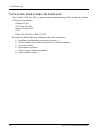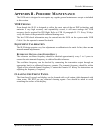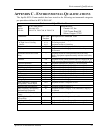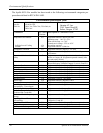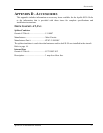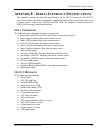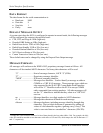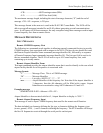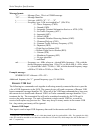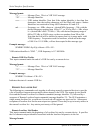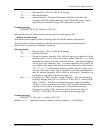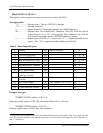
Serial Interface Specifications
60 Apollo SL30 Installation Manual
DATA FORMAT
The data format for the serial communication is:
• Baud rate 9600
• Data bits 8
• Stop bits 1
• Parity none
DEFAULT MESSAGE OUTPUT
At system start when the SL30 is configured to operate in normal mode, the following messages
will be configured for output at the specified rates:
• CDI, VDI, and Flags at 10Hz (high rate).
• Decoded OBS Setting at 10Hz (high rate).
• Radial from Active VOR at 10Hz (high rate).
• Radial from Standby VOR at 1Hz (low rate).
• Decoded Station Identifier at 1Hz (low rate).
• NAV Receiver Status at 1Hz (low rate).
• Comm Transceiver Status at 1Hz (low rate).
These default rates can be changed by using the Request Data Output message.
MESSAGE FORMATS
All messages will conform to the NMEA 0183 proprietary message format as follows. All
characters will be standard ASCII characters. No binary data characters will be used.
“$” ............................Start of message character, ASCII “$” (024h).
“P” .............................Proprietary message identifier.
“MRR” ......................II Morrow company identifier.
c..................................Message class identifier. Used to identify a message as either a
COMM or a VHF NAV message. Those message types which are
also supported by the SL40 VHF Comm Radio Serial Interface
will use the “C” identifier to allow the SL30 to accept COMM
radio commands from existing products. All other messages will
use the “V” identifier to indicate that they relate to a VHF NAV
receiver.
nn .............................Message identifier, two-digit number in ASCII characters.
d.....d ........................Message data characters defined for each message.
chksum .....................Message checksum, including message identifier through data
characters. The two-digit checksum is generated by adding all
values of valid characters together, ignoring carry (if any). This
value is converted into two encoded hex
1
characters (30h-3Fh).
1
Encoded hex: each character consists of 4 bits of data placed in the low order nibble +30h. For example, the 8-bit
value 5Fh would be encoded as two characters with values of 35h and 3Fh, which map to the ASCII characters “5”
and “?”, respectively.



